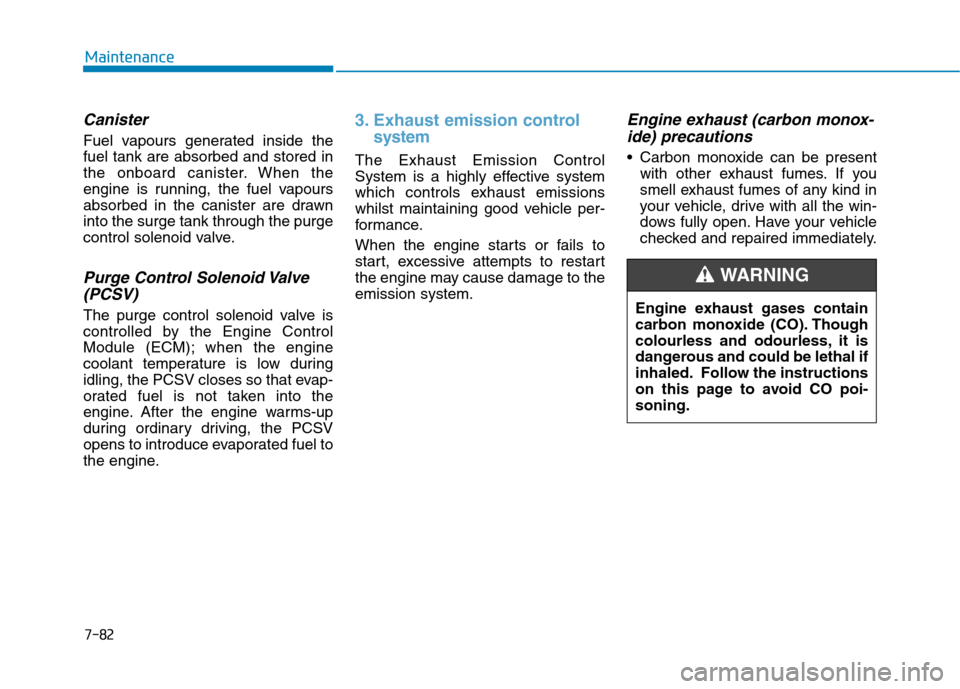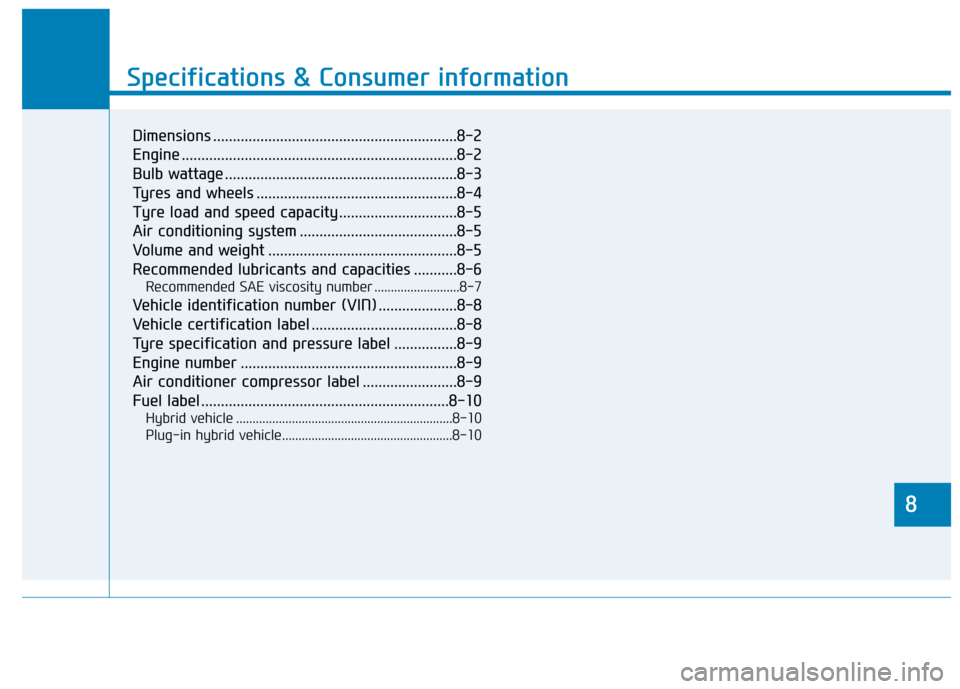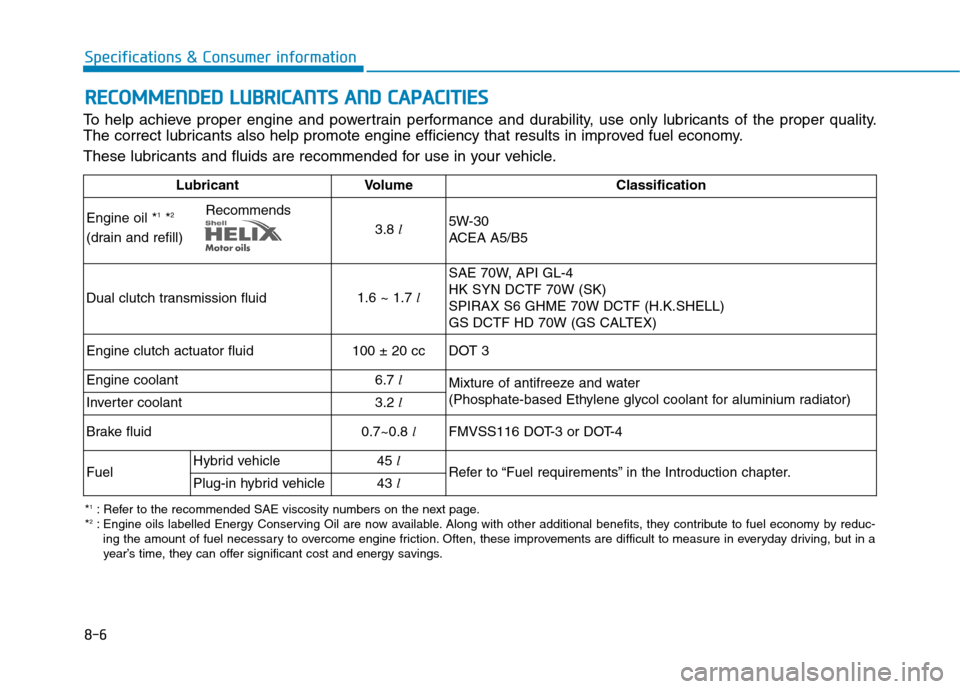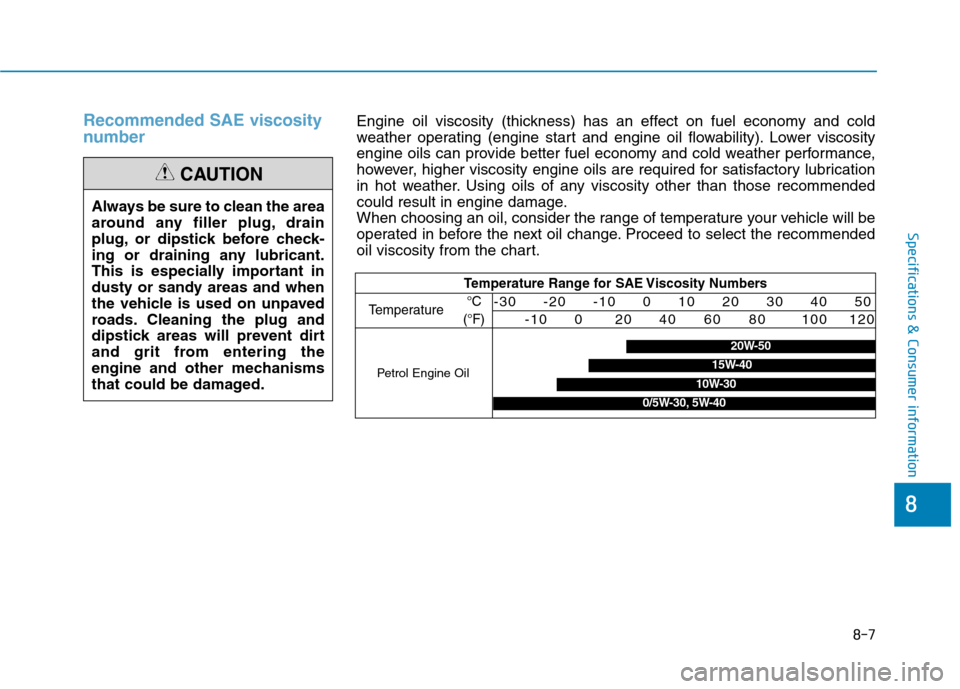Page 600 of 613

7-82
Maintenance
Canister
Fuel vapours generated inside the
fuel tank are absorbed and stored in
the onboard canister. When the
engine is running, the fuel vapours
absorbed in the canister are drawn
into the surge tank through the purge
control solenoid valve.
Purge Control Solenoid Valve
(PCSV)
The purge control solenoid valve is
controlled by the Engine Control
Module (ECM); when the engine
coolant temperature is low during
idling, the PCSV closes so that evap-
orated fuel is not taken into the
engine. After the engine warms-up
during ordinary driving, the PCSV
opens to introduce evaporated fuel to
the engine.
3. Exhaust emission control
system
The Exhaust Emission Control
System is a highly effective system
which controls exhaust emissions
whilst maintaining good vehicle per-
formance.
When the engine starts or fails to
start, excessive attempts to restart
the engine may cause damage to the
emission system.
Engine exhaust (carbon monox-
ide) precautions
Carbon monoxide can be present
with other exhaust fumes. If you
smell exhaust fumes of any kind in
your vehicle, drive with all the win-
dows fully open. Have your vehicle
checked and repaired immediately.
Engine exhaust gases contain
carbon monoxide (CO). Though
colourless and odourless, it is
dangerous and could be lethal if
inhaled. Follow the instructions
on this page to avoid CO poi-
soning.
WARNING
Page 601 of 613

7-83
7
Maintenance
Do not operate the engine in con-
fined or closed areas (such as
garages) any more than what is
necessary to move the vehicle in or
out of the area.
When the vehicle is stopped in an
open area for more than a short
time with the engine running,
adjust the ventilation system (as
needed) to draw outside air into the
vehicle.
Never sit in a parked or stopped
vehicle for any extended time with
the engine running.
When the engine stalls or fails to
start, excessive attempts to restart
the engine may cause damage to
the emission control system.Operating precautions for cat-
alytic converters (if equipped)Your vehicle is equipped with a cat-
alytic converter emission control
device. To prevent damage to the
catalytic converter and to your vehi-
cle, take the following precautions:
Use only UNLEADED FUEL for
petrol engines.
Do not operate the vehicle when
there are signs of engine malfunc-
tion, such as misfire or a noticeable
loss of performance.
Do not misuse or abuse the
engine. Examples of misuse are
coasting with the hybrid system off
and descending steep grades in
gear with the hybrid system off.
Do not operate the engine at high
idle speed for extended periods (5
minutes or more). The exhaust system and cat-
alytic converter are very hot
during and immediately after
the engine has been running. To
avoid SERIOUS INJURY or
DEATH:
Do not park, idle, or drive the
vehicle over or near flamma-
ble objects, such as grass,
vegetation, paper, leaves, etc.
A hot exhaust system can
ignite flammable items under
your vehicle.
Keep away from the exhaust
system and catalytic convert-
er or you may get burned.
Also, Do not remove the heat
sink around the exhaust sys-
tem, do not seal the bottom of
the vehicle, and do not coat
the vehicle for corrosion con-
trol. It may present a fire risk
under certain conditions.
WARNING
Page 602 of 613
7-84
Maintenance
Do not modify or tamper with any
part of the engine or emission con-
trol system. All inspections and
adjustments must be made by an
authorised HYUNDAI dealer.
Avoid driving with an extremely low
fuel level.
Running out of fuel could cause
the engine to misfire, damaging
the catalytic converter.
Page 604 of 613

8
Specifications & Consumer information
8
Specifications & Consumer information
8
Dimensions ..............................................................8-2
Engine ......................................................................8-2
Bulb wattage ...........................................................8-3
Tyres and wheels ...................................................8-4
Tyre load and speed capacity ..............................8-5
Air conditioning system ........................................8-5
Volume and weight ................................................8-5
Recommended lubricants and capacities ...........8-6
Recommended SAE viscosity number ..........................8-7
Vehicle identification number (VIN) ....................8-8
Vehicle certification label .....................................8-8
Tyre specification and pressure label ................8-9
Engine number .......................................................8-9
Air conditioner compressor label ........................8-9
Fuel label ...............................................................8-10
Hybrid vehicle ..................................................................8-10
Plug-in hybrid vehicle....................................................8-10
Page 609 of 613

8-6
Specifications & Consumer information
R RE
EC
CO
OM
MM
ME
EN
ND
DE
ED
D
L
LU
UB
BR
RI
IC
CA
AN
NT
TS
S
A
AN
ND
D
C
CA
AP
PA
AC
CI
IT
TI
IE
ES
S
To help achieve proper engine and powertrain performance and durability, use only lubricants of the proper quality.
The correct lubricants also help promote engine efficiency that results in improved fuel economy.
These lubricants and fluids are recommended for use in your vehicle.
Lubricant Volume Classification
Engine oil *
1*2Recommends
(drain and refill)3.8 l5W-30
ACEA A5/B5
Dual clutch transmission fluid1.6 ~ 1.7 lSAE 70W, API GL-4
HK SYN DCTF 70W (SK)
SPIRAX S6 GHME 70W DCTF (H.K.SHELL)
GS DCTF HD 70W (GS CALTEX)
Engine clutch actuator fluid 100 ± 20 cc DOT 3
Engine coolant6.7 l
Mixture of antifreeze and water
(Phosphate-based Ethylene glycol coolant for aluminium radiator)
Inverter coolant3.2 l
Brake fluid0.7~0.8 l
FMVSS116 DOT-3 or DOT-4
FuelHybrid vehicle45 l
Refer to “Fuel requirements” in the Introduction chapter.
Plug-in hybrid vehicle43 l
*1: Refer to the recommended SAE viscosity numbers on the next page.
*2: Engine oils labelled Energy Conserving Oil are now available. Along with other additional benefits, they contribute to fuel economy by reduc-
ing the amount of fuel necessary to overcome engine friction. Often, these improvements are difficult to measure in everyday driving, but in a
year’s time, they can offer significant cost and energy savings.
Page 610 of 613

8-7
8
Specifications & Consumer information
Recommended SAE viscosity
number
Always be sure to clean the area
around any filler plug, drain
plug, or dipstick before check-
ing or draining any lubricant.
This is especially important in
dusty or sandy areas and when
the vehicle is used on unpaved
roads. Cleaning the plug and
dipstick areas will prevent dirt
and grit from entering the
engine and other mechanisms
that could be damaged.
CAUTION
Engine oil viscosity (thickness) has an effect on fuel economy and cold
weather operating (engine start and engine oil flowability). Lower viscosity
engine oils can provide better fuel economy and cold weather performance,
however, higher viscosity engine oils are required for satisfactory lubrication
in hot weather. Using oils of any viscosity other than those recommended
could result in engine damage.
When choosing an oil, consider the range of temperature your vehicle will be
operated in before the next oil change. Proceed to select the recommended
oil viscosity from the chart.
Temperature Range for SAE Viscosity Numbers
Temperature
Petrol Engine Oil
°C
(°F)-30 -20 -10 0 10 20 30 40 50
-10 0 20 40 60 80 100 120
20W-50
15W-40
10W-30
0/5W-30, 5W-40
Page 613 of 613
Hybrid vehicle
The fuel label is attached on the fuel
filler door.
A. Octane rating of unleaded Petrol
1) RON/ROZ : Research Octane
Number
2) (R+M)/2, AKI : Anti Knock Index
B. Identifiers for Petrol-type fuels
❈This symbol means usable
fuel.
Do not use any other fuel.
C. For further details, refer to the “Fuel
Requirement” in the Introduction
chapter.
Plug-in Hybrid vehicle
The fuel label is attached on the fuel
filler door.
A. Octane rating of unleaded Petrol
1) RON : Research Octane Number
2) (R+M)/2 : Anti Knock Index
B. Identifiers for Petrol-type fuels
❈This symbol means usable fuel.
Do not use any other fuel.
C. For further details, refer to the “Fuel
Requirement” in the Introduction
chapter.
D. Add fuel into the fuel tank within
20 min.
F FU
UE
EL
L
L
LA
AB
BE
EL
L
(
(I
IF
F
E
EU
UQ
QI
IP
PP
PE
ED
D)
)
8-10
Specifications & Consumer information
OTM048455LOAEPH048584 ■For Europe■Except EuropeOAEPH048585